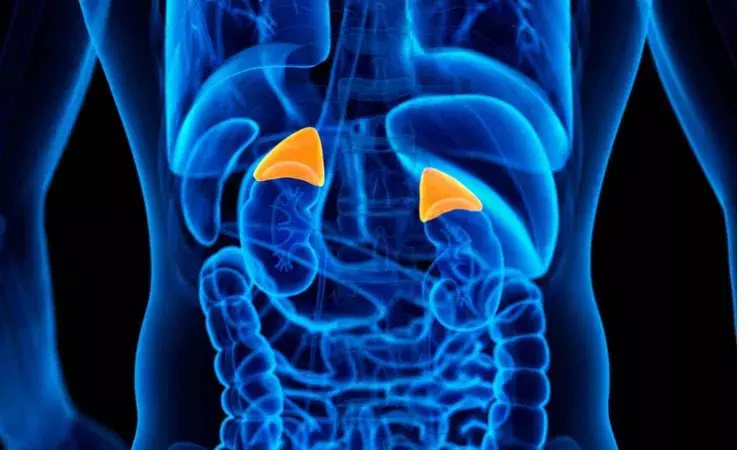- Home
- Medical news & Guidelines
- Anesthesiology
- Cardiology and CTVS
- Critical Care
- Dentistry
- Dermatology
- Diabetes and Endocrinology
- ENT
- Gastroenterology
- Medicine
- Nephrology
- Neurology
- Obstretics-Gynaecology
- Oncology
- Ophthalmology
- Orthopaedics
- Pediatrics-Neonatology
- Psychiatry
- Pulmonology
- Radiology
- Surgery
- Urology
- Laboratory Medicine
- Diet
- Nursing
- Paramedical
- Physiotherapy
- Health news
- Fact Check
- Bone Health Fact Check
- Brain Health Fact Check
- Cancer Related Fact Check
- Child Care Fact Check
- Dental and oral health fact check
- Diabetes and metabolic health fact check
- Diet and Nutrition Fact Check
- Eye and ENT Care Fact Check
- Fitness fact check
- Gut health fact check
- Heart health fact check
- Kidney health fact check
- Medical education fact check
- Men's health fact check
- Respiratory fact check
- Skin and hair care fact check
- Vaccine and Immunization fact check
- Women's health fact check
- AYUSH
- State News
- Andaman and Nicobar Islands
- Andhra Pradesh
- Arunachal Pradesh
- Assam
- Bihar
- Chandigarh
- Chattisgarh
- Dadra and Nagar Haveli
- Daman and Diu
- Delhi
- Goa
- Gujarat
- Haryana
- Himachal Pradesh
- Jammu & Kashmir
- Jharkhand
- Karnataka
- Kerala
- Ladakh
- Lakshadweep
- Madhya Pradesh
- Maharashtra
- Manipur
- Meghalaya
- Mizoram
- Nagaland
- Odisha
- Puducherry
- Punjab
- Rajasthan
- Sikkim
- Tamil Nadu
- Telangana
- Tripura
- Uttar Pradesh
- Uttrakhand
- West Bengal
- Medical Education
- Industry
Novel PET/CT technique accurately diagnoses sub-types of primary aldosteronism: Study

China: A recent study published in The Journal of Nuclear Medicine has shed light on the clinical value of a novel imaging approach, 68Ga-pentixafor PET/CT, in subtype diagnosis of primary aldosteronism patients with adrenal micronodules
The study showed that 68Ga-pentixafor PET/CT accurately identified sub-types of primary aldosteronism (an adrenal gland disorder), outperforming traditional methods for diagnosis. This detailed imaging technique provides a clearer picture of the adrenal glands, helping doctors decide more confidently whether surgery is the right option for patients.
Primary aldosteronism is an endocrine disorder that occurs when the adrenal glands produce too much of the hormone aldosterone, frequently caused by the presence of nodules on the glands. High aldosterone levels cause the body to retain too much sodium and not enough potassium. This imbalance can lead to high blood pressure, putting patients at an increased risk of stroke and heart disease.
“In primary aldosteronism, it’s important for physicians to differentiate between surgically eligible and ineligible forms so that they can develop the best treatment plan. This is usually done with adrenal CT and adrenal venous sampling. However, is rather challenging and often imprecise to diagnose adrenal micronodules with these methods,” said Li Huo, MD, PhD, professor and chair in the Department of Nuclear Medicine at the Chinese Academy of Medical Sciences and Peking Union Medical College Hospital in Beijing, China. “To more clearly image these micronodules, we combined PET/CT with a unique tracer that targets specific receptors in the adrenal glands and evaluated its performance.”
In the study, 123 patients with adrenal micronodules identified by adrenal CT were examined using 68Ga-pentixafor PET/CT, and 104 patients who underwent surgery or successful adrenal venous sampling were included in the analysis. Nuclear medicine physicians evaluated the 68Ga-pentixafor PET/CT data for sensitivity, specificity and accuracy of visual analysis. This information was then compared to adrenal CT and adrenal venous sampling results.
68Ga-pentixafor PET/CT showed superior sensitivity, specificity and accuracy (90.2 percent, 72.7 percent and 86.5 percent, respectively) in identifying surgically eligible primary aldosteronism patients compared with adrenal CT (73.1 percent, 53.8 percent and 68.3 percent, respectively). It was also able to predict surgical outcomes better than adrenal venous sampling (82.4 percent vs. 68.86 percent).
“The significance of this work lies in its potential to change how we diagnose and treat primary aldosteronism patients with tiny adrenal nodules. For patients, this means an improved chance of getting the right treatment, especially when it comes to deciding whether surgery is necessary. Accurate diagnosis is crucial because it leads to more effective treatments, less unnecessary surgery and overall better health outcomes. It's about offering patients a more personalized and precise medical approach,” stated Huo.
Reference:
Jie Ding, Xiang Li, Shengyan Liu, Yinjie Gao, Guoyang Zheng, Marcus Hacker, Yushi Zhang, Anli Tong and Li Huo, Clinical Value of 68Ga-Pentixafor PET/CT in Subtype Diagnosis of Primary Aldosteronism Patients with Adrenal Micronodules, Journal of Nuclear Medicine, DOI: https://doi.org/10.2967/jnumed.123.266061.
Dr Kamal Kant Kohli-MBBS, DTCD- a chest specialist with more than 30 years of practice and a flair for writing clinical articles, Dr Kamal Kant Kohli joined Medical Dialogues as a Chief Editor of Medical News. Besides writing articles, as an editor, he proofreads and verifies all the medical content published on Medical Dialogues including those coming from journals, studies,medical conferences,guidelines etc. Email: drkohli@medicaldialogues.in. Contact no. 011-43720751


